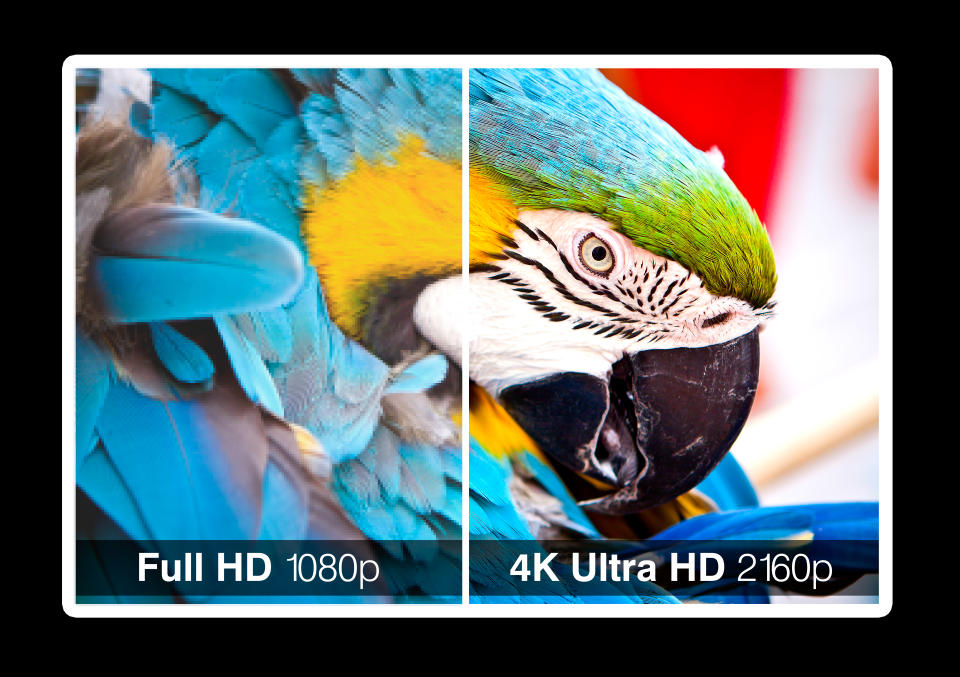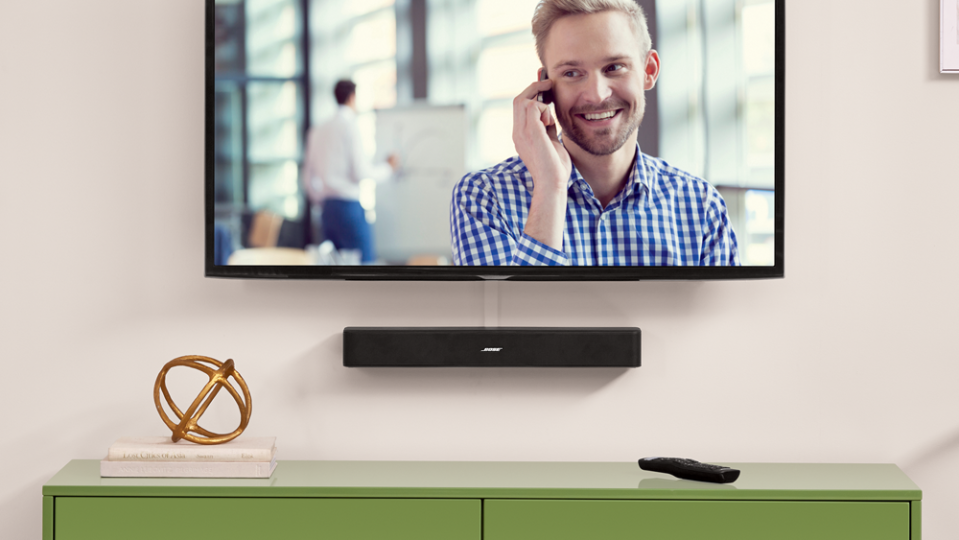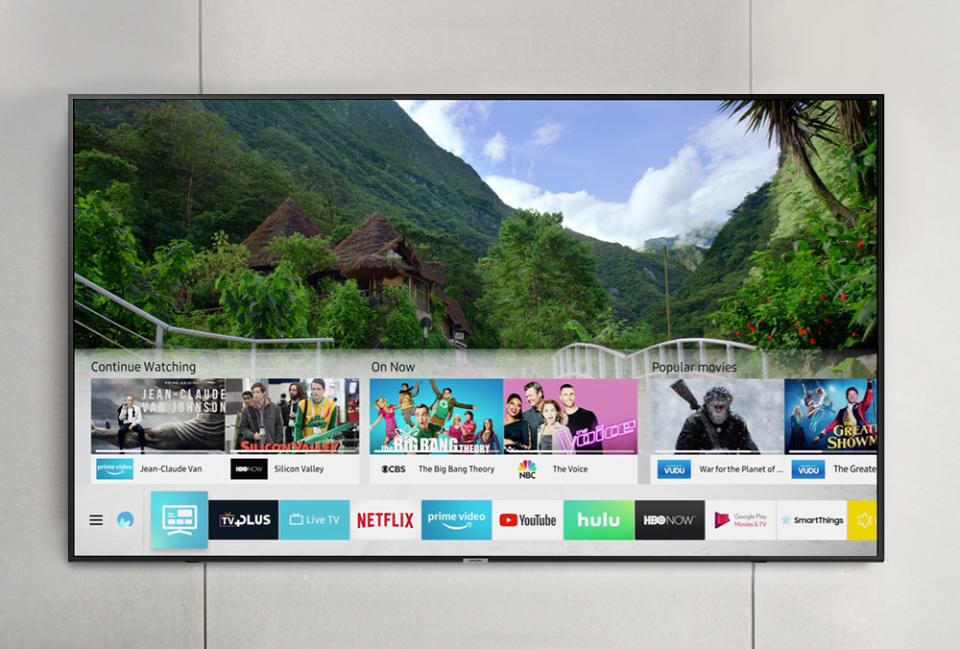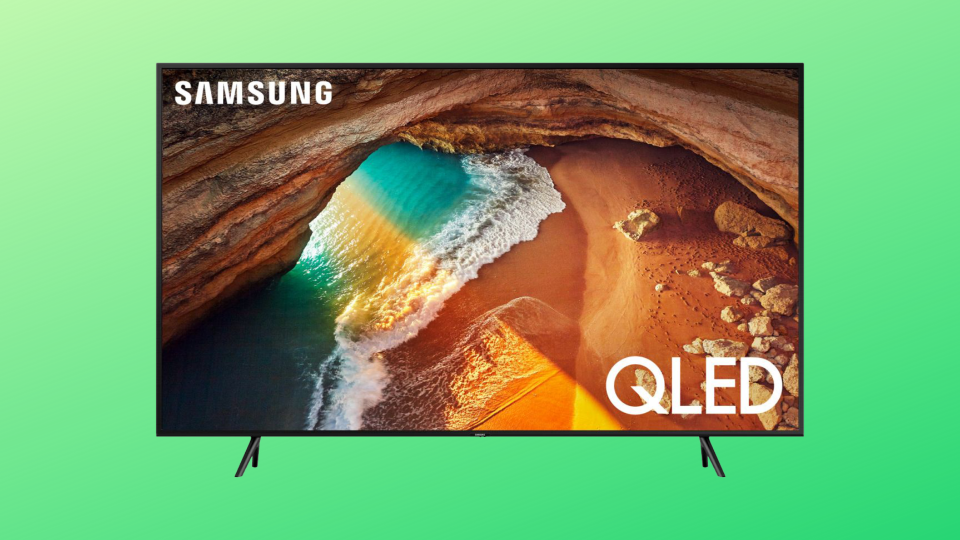Buying guide: Everything you need to know about shopping for a 4K TV
The editors at Yahoo Lifestyle are committed to finding you the best products at the best prices. At times, we may receive a share from purchases made via links on this page.
And there it is. Your old HD TV has kicked the bucket. You’ll never get a chance to watch old episodes of Chuck or Gossip Girl on your beloved TV again. The good news? You can finally upgrade and buy something new and shiny for your home!
However, with so many different types of TVs out there, shopping for a modern 4K TV might seem daunting. That’s where we come in.
We broke down the basics, so you won’t be overwhelmed when you’re at a retailer like Walmart, or shopping online with Amazon.
Who knows? After reading this article you just might be a 4K TV expert who doles out shopping advice to your friends and family.
4K resolution

First and foremost, you want to look for real 4K resolution. This means the display resolution has to be at least 3840x2160 or 2160p, which is sometimes known as Ultra HD or UHD quality. Full HD resolution, also known as 1920x1080, or 1080p, used to be the industry standard for big screen TVs in the last decade. It’s likely that many people have yet to upgrade to 4K — which is the new standard. With a massive pixel count, 4K images are crisper, clearer and more detailed with brighter colors and deep black levels. Picture quality is more true-to-life and vibrant with 4K compared to FHD and HD.
Size means everything
This might be a no-brainer, but you want to make sure you have enough space in your living room to fit a big screen TV. You don’t want to pick something too big that won’t fit, or too small that will leave a lot of dead space against the walls. TV screens are measured diagonally, so you’ll want to measure your space the same way.
You also have to consider if you’re going to use a TV stand or wall mount. Most TVs come with plastic or metal feet at the bottom and are also wall mountable, so it’s a personal choice. Weight shouldn’t be a problem because there are wall mounts for just about every size and weight available.
Keep in mind that the bigger the TV, the more space you’ll need to get the best viewing angle. For example, if you opt for a 65-inch TV, make sure there’s at least eight feet between the TV and your sofa. If you don’t have this much space, consider something smaller.
HDR

High Dynamic Range, or HDR, is the technology responsible for picture and color contrast in newer 4K TV models. HDR makes images and colors brighter, more realistic and accurate. This technology also makes image leaks and color bleeding a thing of the past. Colors (including black and white) are just more clear!
If you see terms like HDR10, HDR10+, Dolby Vision and Hybrid Log Gamma (HLG), these are just different format types, but essentially the same with minor variations in picture quality.
Refresh rate
The refresh rate refers to digital picture processing on large HD and 4K displays, which is measured in hertz (Hz). Generally speaking, you’ll want a 120Hz native refresh rate for smooth motion without a blur effect. Base model TVs might have a 60Hz refresh rate, which is fine, but not as effective. Anything more than 120Hz and you might be in danger of watching movies with motion smoothing settings turned on. And nobody wants that!
Just get a soundbar
Believe it or not, audio isn’t that important when buying a new 4K TV. You’ll definitely need to add an audio component, but you can save some money by spending on the best picture instead of audio quality. Then you can use the money you saved and put it towards a premium soundbar that would boost the audio better than anything you’d find built-in.
Is it smart?
Smart TVs are the best ways to watch streaming apps like Netflix, Hulu, Amazon Prime Video and HBO Now without purchasing an additional streaming device such as Google Chromecast, Fire TV, Roku or Apple TV. In fact, most modern TVs have these devices built-in and ready to go.
You just have to connect your new 4K TV to your home WiFi network and log on to your favorite streaming app to start watching Stranger Things, Game of Thrones and The Marvelous Mrs. Maisel.
In addition, some smart TVs also feature voice assistants like Amazon Alexa or Google Assistant to make it easier to find movies and TV shows. You can often control the TV itself with just the sound of your voice. And since these TVs are smart and WiFi enabled, you can also control them with your smartphone if you ever lose the remote.
Input and ports
You might want to hook up a Blu-ray player, video game console or soundbar to your TV. If this is the case, you want to look for a 4K TV with at least three or four High Definition Multimedia Interface (HDMI) ports.
However, you might have some legacy devices like an old sound system, VCR or DVD player you’d like to attach to your 4K TV. If so, look for models with a composite TV port or optical audio port.
Display type
OLED. QLED. LCD. LED. What’s the difference? When shopping for a new 4K TV, you’re going to see variations of these acronyms, which refer to display type.
Liquid Crystal Displays, or LCD, is the technology that uses two layers of polarized glass where liquid crystals pass through and block light to create an image. LCD panels can’t create their own light source, so they need fluorescent bulbs to work as a backlight system. This is why older TVs are much bigger than newer TVs you’d find today.
Over the years, manufacturers replaced those bulbs in LCD displays with LED (Light Emitting Diode) technology that is more efficient and less expensive to produce. At this point, LCD and LED are synonymous and effectively interchangeable.
OLED (Organic Light-Emitting Diode), on the other hand, can produce their own light source without backlighting. TVs that use OLED displays are slimmer and feature much better color contrast with deep black levels than LED 4K models. In addition, OLED TVs have wider and much better viewing angles.
This brings us to QLED, which can only be found in Samsung 4K TVs. QLED is essentially LED, but with an extra layer of “quantum dot” material between two glass panels. This makes images more color accurate and deeper than traditional LED models, while the light emitting through the quantum dots is brighter and color temperature cooler with whiter light. Moreover, QLED technology is proprietary to only Samsung.
In conclusion
We hope you have a better idea about what goes into buying a new 4K TV. We also hope it’s less intimidating now that you know the differences in refresh rate, display type and picture resolution. Don’t forget: Always buy a soundbar and pick a TV with built-in smart home features!
Of course, price is something you should always consider, so we’ll leave that up to you and your wallet. Generally, you’re going to pay more for bigger TVs than smaller ones, while display technology like OLED and QLED are often more expensive than standard LED TVs.
So now you’re ready to go out there and buy with confidence! Or, stay here and pick up something nice for your home with just a few clicks.
Read More from Yahoo Lifestyle:
Follow us on Instagram, Facebook, Twitter, and Pinterest for nonstop inspiration delivered fresh to your feed, every day.
Want daily pop culture news delivered to your inbox? Sign up here for Yahoo’s newsletter.

 Yahoo News
Yahoo News 



